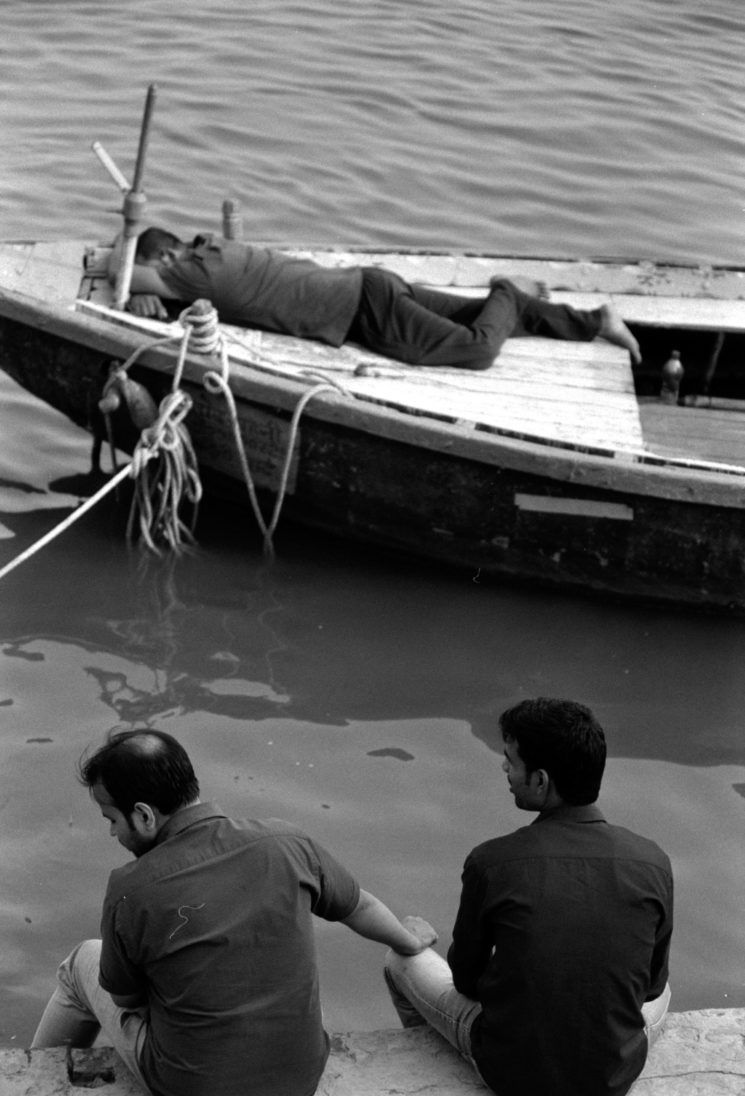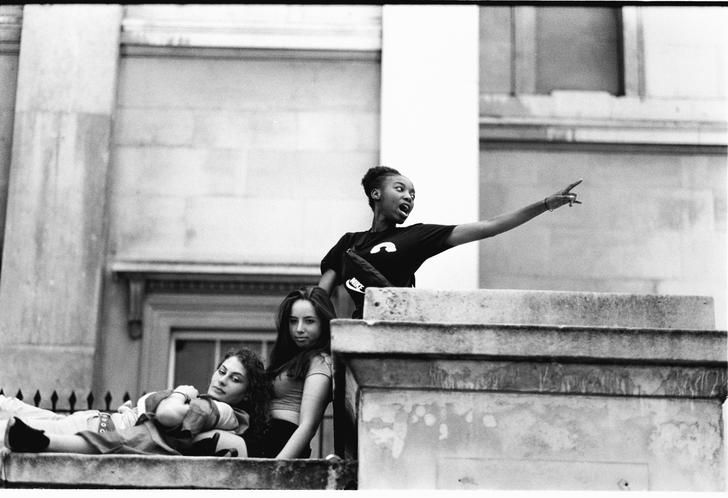
How I Describe the World to myself to Improve my Street Photography
One of the best exercises for street photography I ever adopted was to focus my internal monologue into a process of constantly describing what I am seeing.
I have always been introspective about the way I work, when it comes to what influences my overarching approach, what draws my eye moment to moment, and what I look for while curating.
I think that my best photographs are not compositions I’ve “made” but rather things I’ve recognised around me. It makes sense to me that my most effective workflow will involve a more active means of recognition – to be present in each moment. My awareness needs to be both cast in a wide net over my surroundings, but also directed specifically, and this can be quite a difficult balance. Any technique or method I can apply to make sense from this chaos is quite welcome, and applying my stream of consciousness to providing almost constant captioning has proved to be a great solution for me.
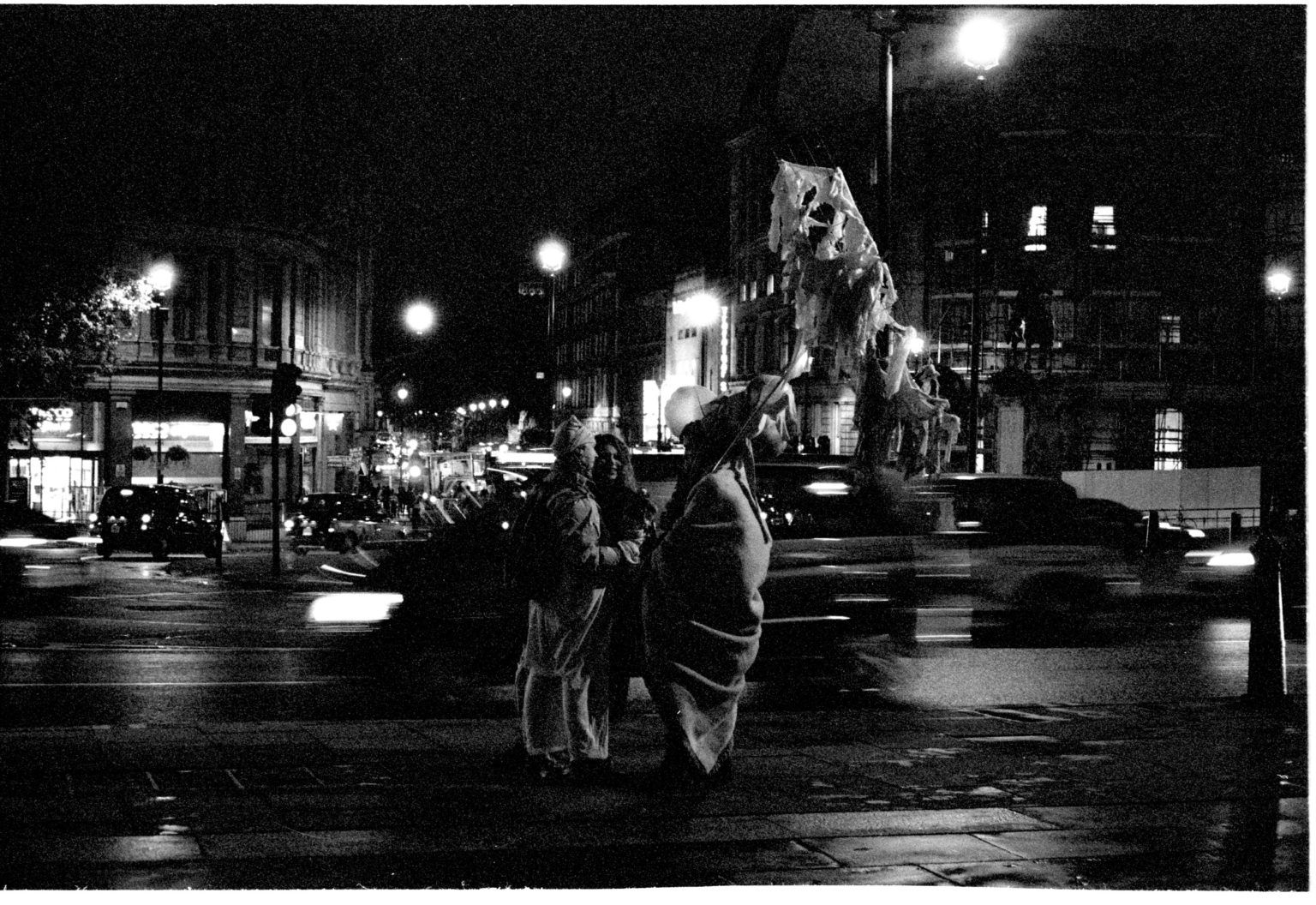
Essentially this involves reducing what I am seeing down to basic concepts and describing those to myself in prose. So while walking around I tell myself, “there’s a reflection in that window, that man is about to hail a taxi, those two people in matching shoes are about to cross each others paths, there’s a group of elderly ladies waiting at that bus stop,” and so on. In this way I can process each of these ideas and see whether things may potentially work together in a composition, or be strong enough to be their own image entirely.
This also gives me a way to apply much higher discretion over the kinds of image I take. I am interested largely in depicting surreal situations, but with a more literal interpretation of my surroundings rather than using many perspective/exposure tricks/gimmicks. This means that I am usually looking at things in a fairly straightforward way, and can easily separate out things that are uninteresting for me fairly quickly.
If all I can think of to describe a scene is “man crosses the street through a patch of light,” or “girl walks past doorway,” or “man rides bike through light architecture,” then I can dismiss these without feeling the need to spend long working on them. However if it is something that feels more interesting to me, like “man does a handstand in the middle of Oxford Circus while people cross the street behind him,” or “a girl clings to the back of a suitcase as it is wheeled through the street” then for sure I translate that into an image without a second thought.
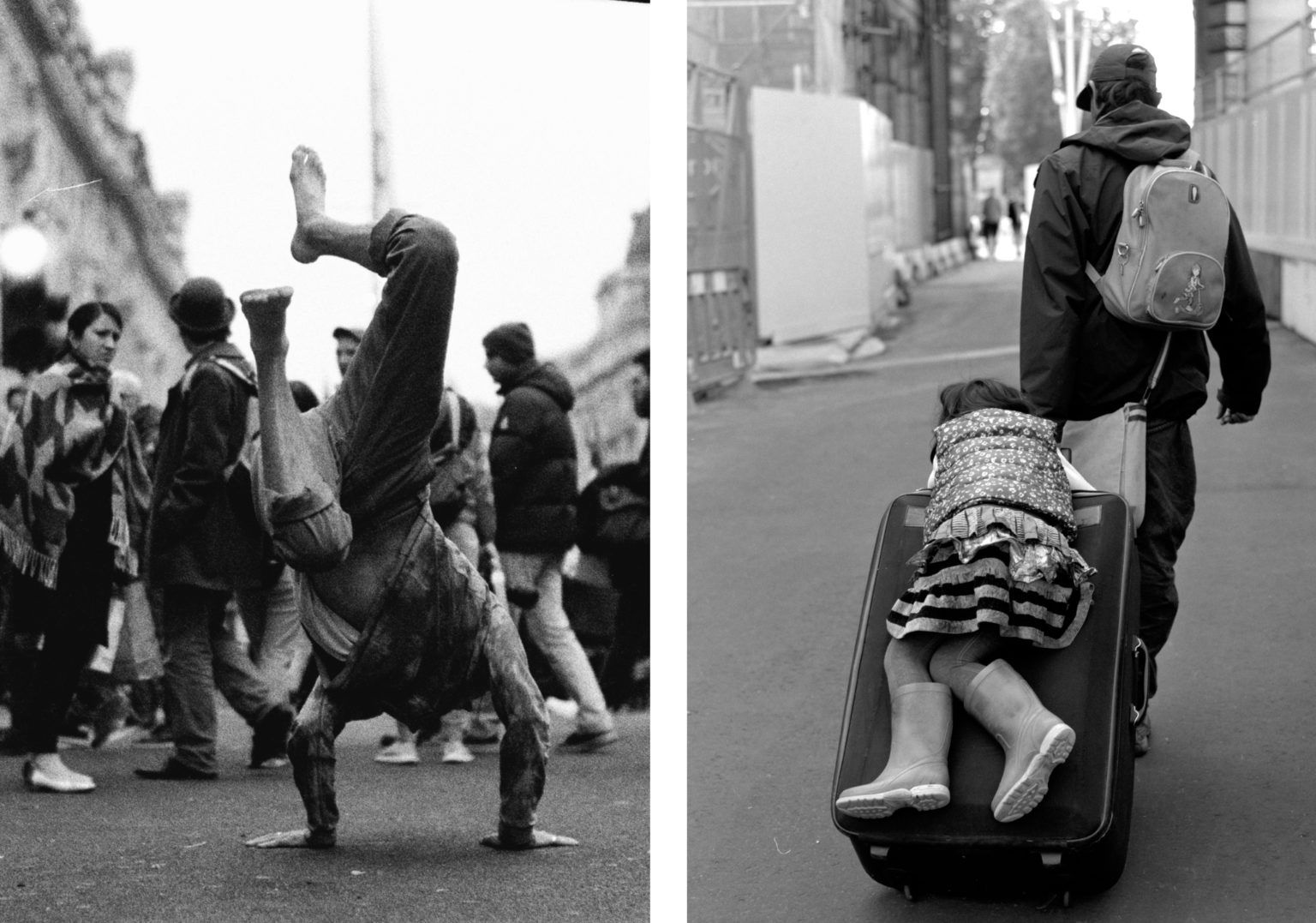
It isn’t always a matter of outright refusing scenes that don’t meet the standards of an interesting description. For example, “a person walking towards me” would be uninteresting, but “a woman walks past on a rainy day, holding her shawl closed against the wind” has a bit more to it.
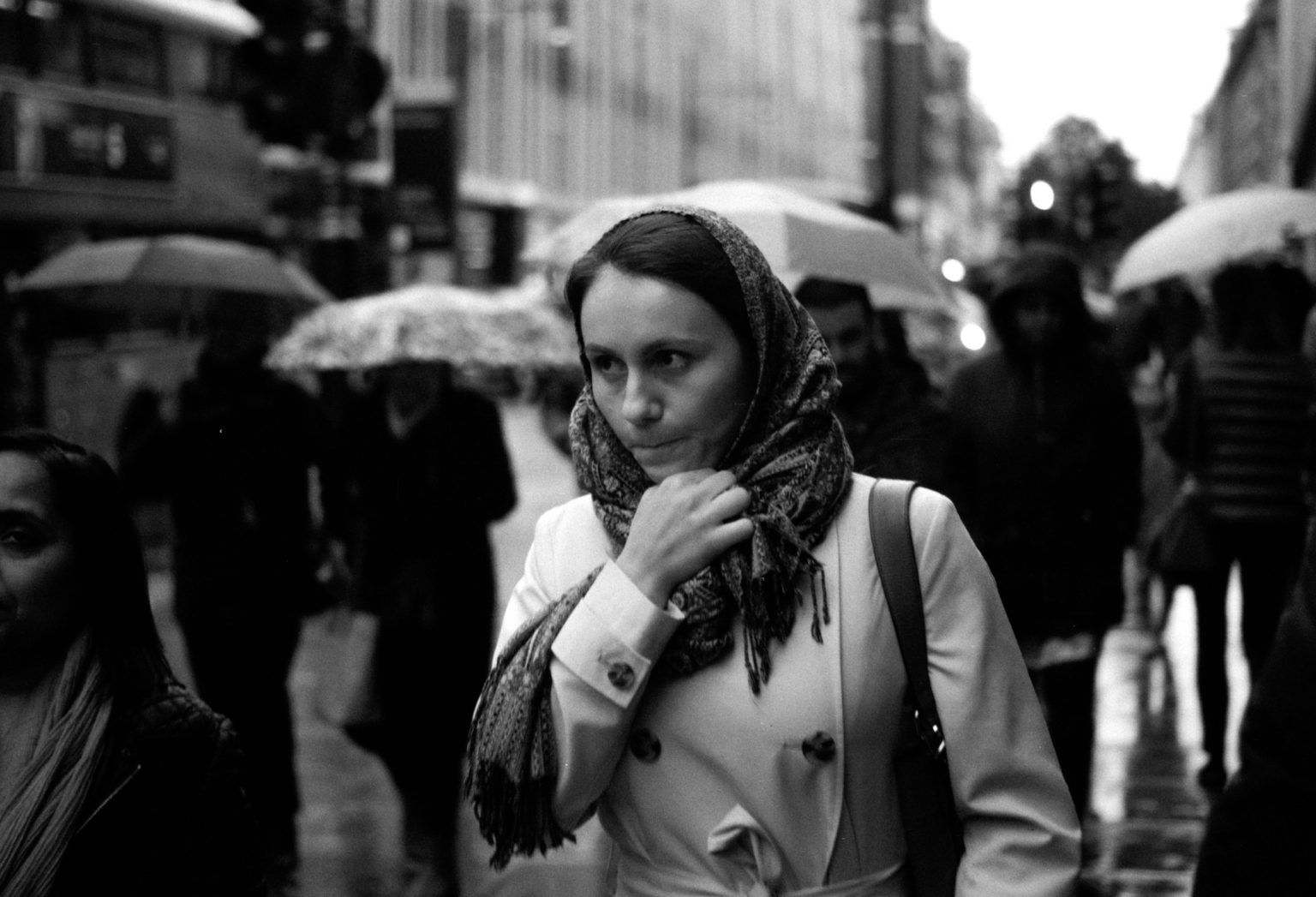
These aren’t hard and fast rules, and I’ll always look for an excuse to make an image rather than not make an image. There should always be another layer, something that adds depth to an otherwise simple scenario. So while “figure walks through light” might be something that doesn’t catch my interest the potential for “man with interesting coat runs through light” just might. I’ll try and see if I can find two or more things that elevate the mediocrity, which gives my audience a reason to stay with my images, rather than quickly absorbing the gist and moving on.
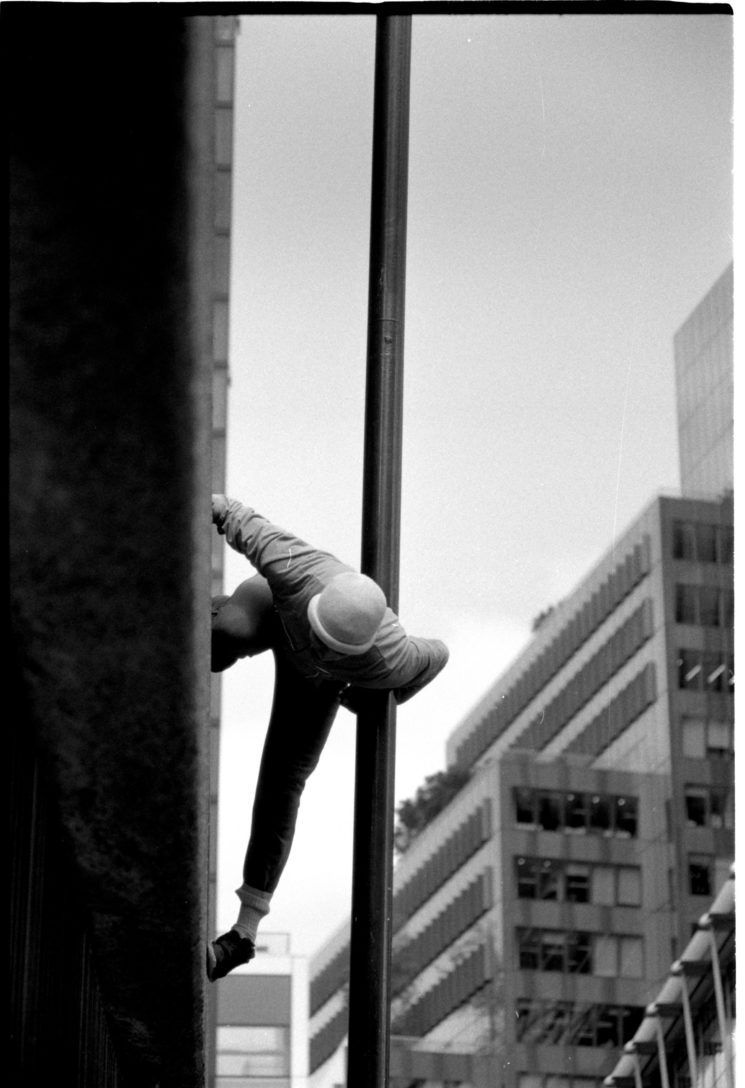
I like to think that by imagining the eventual description/caption of potential images while in the moment of making them that I am able to really refine exactly what I want to include and not include in a picture. It keeps me in tune to the weirder side of life, and allows me to hold my high standards in terms of what I will and will not choose to spend my time photographing. Less of the mundane; no characters simply standing around or moving through light, but rather serious moments, bizarre activities, unrepeatable scenes, and situations with emotional resonance.
I think the next step is to abbreviate the prose and allow myself to think in more abstract terms – something I already do while working the photojournalistic side of things. Here I am faster with receiving impressions of something happening, or something that’s about to happen, which makes capturing moments a more natural process.
